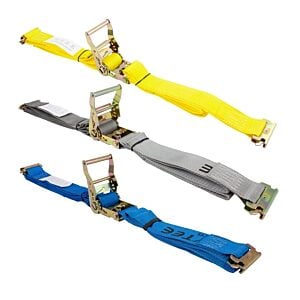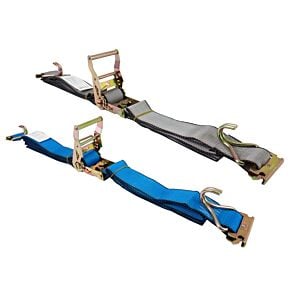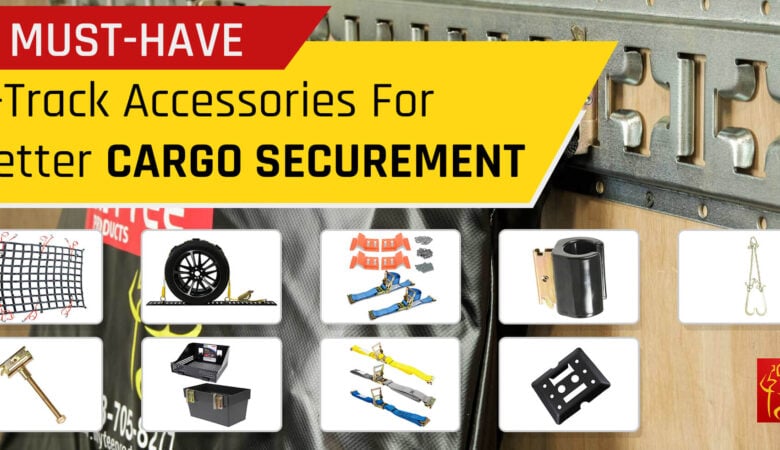Most of what we talk about in terms of cargo control pertains to flatbed trailers. That said, we do not want to leave dry goods trailers out. Although cargo control to a certain extent pertains to trailers with four walls and a roof (enclosed trailer), cargo still needs to be kept in place during transit to prevent damage. E-track tie-down also know as enclosed trailer tie-down system.
Cargo control is undoubtedly a bit easier when you have walls to work with. In fact, drivers can use those walls to their advantage by way of the E-track system. Most of your modern dry goods cargo vans or enclosed trailers come with E-track built-in so drivers don’t have to worry about it.

An E-track system consists of at least one track running along each side of the trailer. Sometimes there are multiple tracks. The tracks take their name from the shape of the receiving holes. Those holes accept a locking mechanism that, when looked at from the side, resembles the letter ‘e’.
Deploying the Shoring Beam
The easiest way to secure cargo inside a dry goods trailer is with something known as the decking beam. This is an adjustable aluminum decking beam that fits into the E-track on both ends. You simply slide the beam into the track on one side, extend it across the trailer and connect it to the other track.
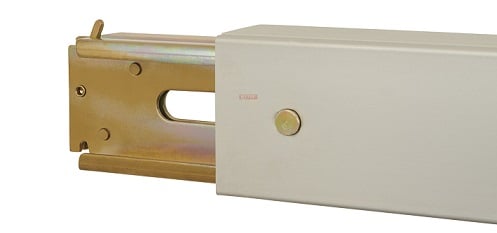
The shoring beam represents the fastest cargo control method in dry goods trucking. Its weakness is that it is limited to certain kinds of cargo. It works well with large carts that might hold linens, paper goods, etc. It does not work well for palleted goods that might shift during transport.
E-Track Ratchet Straps
The dry goods equivalent of ratchet straps for flatbed trailers is the E-track ratchet strap. It works exactly the same way as its flatbed counterpart except that it is held in place on either end by the previously mentioned E-tracks. You simply hook both ends into the tracks and tighten down the strap with a built-in ratchet.
The straps are very convenient and quite effective for loads that will not remain stationary with the shoring beams. And because the straps can be woven in and around pieces of cargo, you can get a really tight fit.
J-Hooks and Tie-Offs
If all else fails, a driver can attach either J-hooks or tie-offs to the E-track on either side of the enclosed trailer. Ropes can then be used to secure cargo as needed. This is the most flexible solution when you are carrying a load that just cannot be secured in any other way. Having said that, these sorts of loads are not the norm for dry goods trailers.
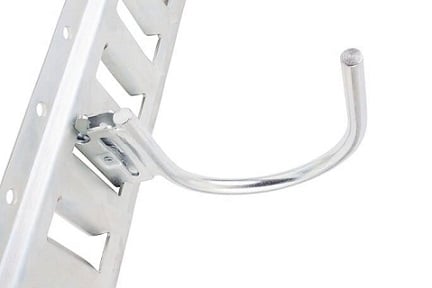
If you do a lot of dry goods work, you are probably familiar with all of the items described here. The question is, what do your toolboxes look like? Do not be caught off guard by a shipper who calls you to pick up the trailer without properly securing the cargo. Have a good supply of E-track J-hooks and tie-offs just in case the shipper doesn’t provide any other means of properly securing the cargo vans.
Heavy-Duty Cargo Nets
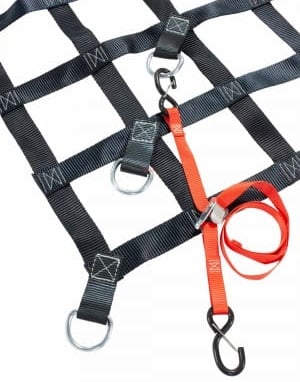
From time to time a driver might carry a load that is naturally loose. An example that immediately comes to mind is dirty laundry heading from a depot to a laundry facility. A workable solution for keeping the laundry in place is the heavy-duty cargo net.
Heavy-duty cargo nets come in a variety of shapes and sizes. They are generally made of webbing material and include hooks or D-rings at key anchor points. They can be attached directly to tie-down points on the cargo or to the E-track using hooks and ropes.



